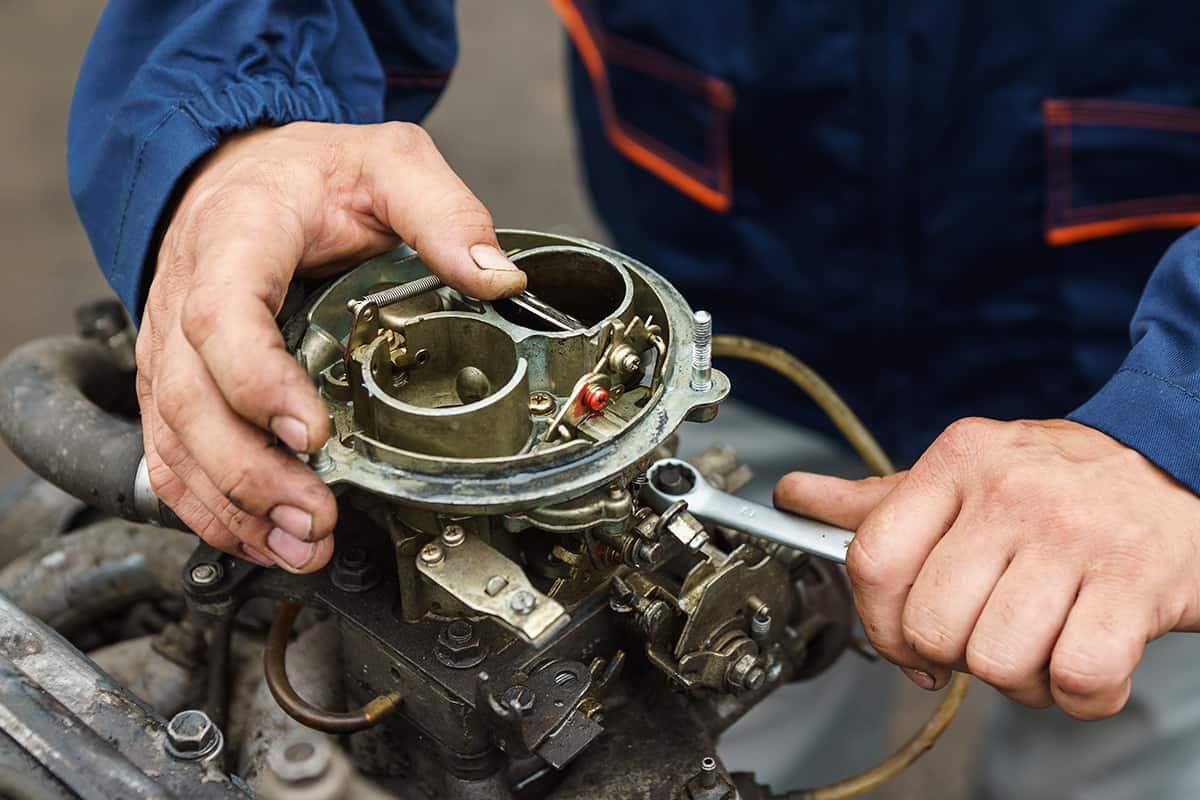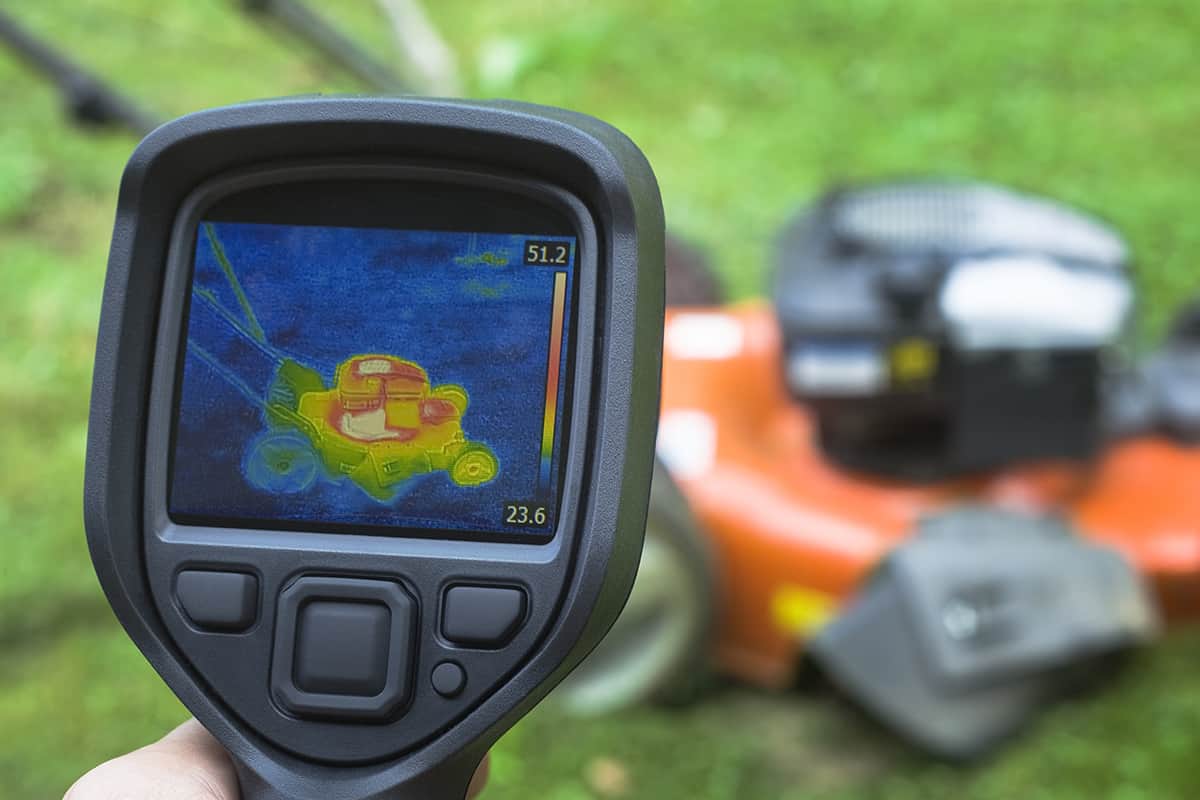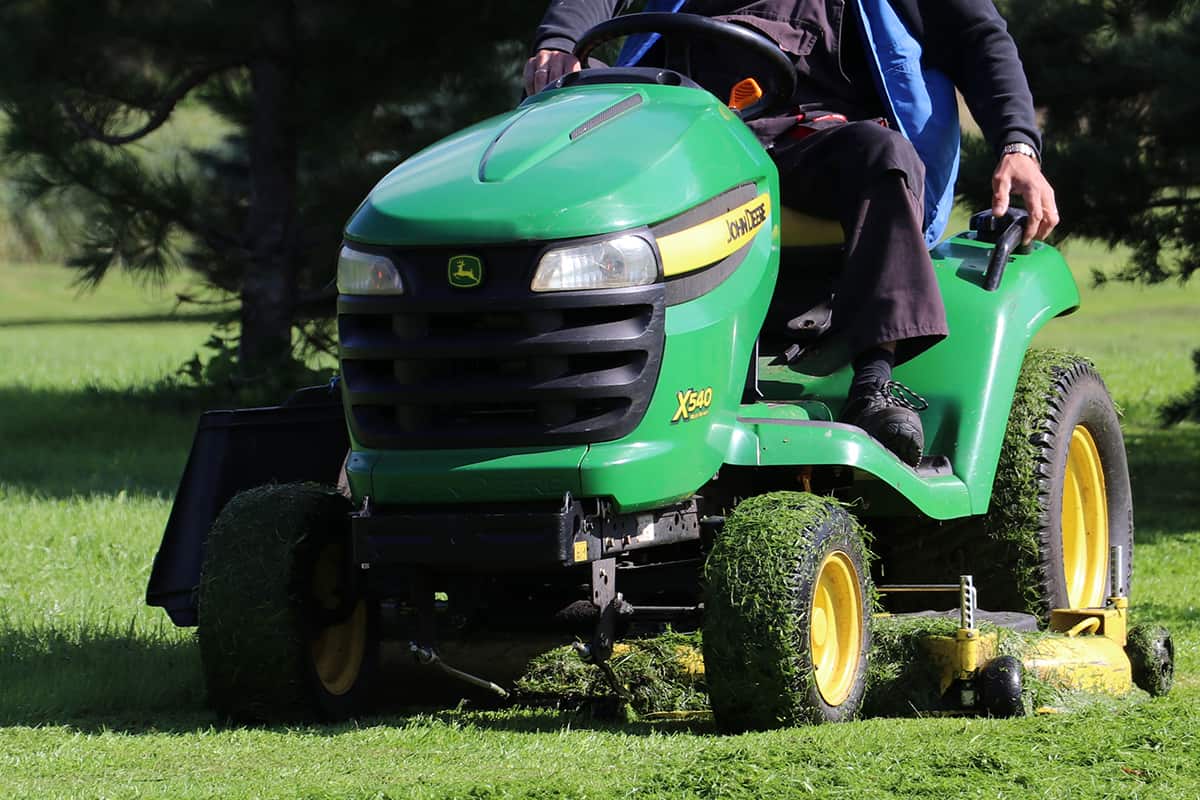When you have a hard time starting your John Deere mower, especially when it's hot, you may wonder what could be wrong. We've researched the causes of this, and here is what we discovered.
These reasons might be why your John Deere mower won't start when it's hot:
- Faulty Spark Plugs
- Defective Battery & Loose Battery Terminals
- Blocked Fuel and/or Air Filter
- Fuel & Fuel System Issues
- Clogged Carburetor
- Overheating Engine
Read on as we elaborate on how these things hinder your John Deere mower from starting when it's hot. Additionally, we'll share tips on how to maintain your unit.
How Does A Faulty Spark Plug Prevent Your John Deere Mower From Starting?
When the spark plug of your device becomes too dirty, it may foul out and result in an engine misfire. If you suspect this is the cause of your mower not starting, remove it and check for debris, carbon build-up, or a fractured porcelain insulator.

Loose connections and improperly gapped plugs can also cause starting problems. There is a tiny space between the two electrodes of every spark plug. When air interacts with the fuel, and the spark jumps across this gap, combustion occurs.
However, if the distance isn't long enough, the heat gap widens, and the mower eventually shuts off. Refer to the manufacturer's manual to ensure that the spacing between the two electrodes is appropriate. Replace a spark plug that is severely corroded or unclean with a new one. Ensure that you gap them following your manufacturer's instructions. Use a wire brush to clean the spark plug's tip if you discover it is in good shape otherwise, and reuse it.
How Do You Check If You Have A Defective Battery Or Loose Battery Terminals?
Use a multimeter to test your batteries. If the reading shows a voltage of approximately 12.7 V, your battery is still good. However, if the reading falls below the ideal voltage, then you need to charge it.
Click here for this product on Amazon.
Additionally, Verify the stability of your battery cables and that there are no rust stains on the connections.
If the terminals exhibit corrosive symptoms, clean them. Utilize a wire brush and a baking soda mixture with a 2:3 water-to-baking soda ratio.
What Causes The Blockage Of Your Mower's Air & Fuel Filter?
Causes Of Clogged Fuel Filter
There are a few reasons why your fuel filter gets clogged. One reason is the rust from your mower's corroded steel fuel tank. Debris from inferior-grade fuel and silt deposits from in-ground storage tanks can also be the culprit. Additionally, condensation-induced moisture build-up in your mower's fuel tank can be the reason for the blockage.
Causes of Clogged Air Filter
Lawnmowers cannot operate normally when their air filters are oiled. If the filter is sufficiently unclean, these particles may flow into the engine because they capture dirt, grime, and mowed grass particles.
An air filter's role is to allow air into the engine so that it may mix with gasoline and ignite, but if it allows dirt to enter or does not allow enough air through, it is not doing its job.
You're probably rotating the mower incorrectly while working on the blades under the mower deck, which will lead to an air filter constantly clogged with oil.
What Are Some Fuel And Fuel System Issues Your John Deere Mower May Encounter?

Here are some fuel and fuel system issues that might cause your John Deere mower not to start when it's hot:
Empty Fuel Tank
Sometimes you overlook simple tasks like fueling your lawnmower or failing to notice a fuel leak. You can fix this by adding fuel to your fuel tank.
Defective Fuel Cap
Your fuel cap has vents, but these can break or become blocked. A vacuum is created in the fuel tank when the cap is broken, blocked, or damaged and no longer vents. The vacuum keeps fuel from escaping the tank, making it impossible for your John Deere mower to start.
Clogged Fuel Line
The fuel line on your John Deere mower may develop sticky residues from old fuel. This impacts the fuel supply needed to start and operate your John Deere.
How Do You Fix A Clogged Carburetor?

Because it controls how much fuel and air are combined to produce combustion, the carburetor is crucial to the operation of your engine. The carburetor on a John Deere lawn mower can get dirty, blocking up parts and preventing them from working properly. By doing this, the gas flow required to start the mower will be stopped.
Steps In Cleaning A Carburetor
To clean your mower's carburetor, you can follow these easy steps:
- Safety should always come first when performing any maintenance work. Make sure that the area you're working on is well-ventilated.
- Make sure that a dirty carburetor is indeed the cause of the problem. It is important to rule out a few other options before disassembling your lawn mower.
- To access the lawn mower's internals, removing a few screws from the exterior paneling is necessary. The carburetor is located after you remove the air filter.
- Gently out the fuel line after removing the carburetor's bolt. At this point, some fuel should leak from the fuel line and the carburetor. Therefore, it's essential to prepare a towel to catch the liquid.
- One nut secures the carburetor bowl in place. Before unscrewing the nut and removing the bowl, clean the area around it with carburetor cleaner. It would be best if you made sure the hole in this nut, a jet with a hole, is free of any impediments.
- You can see the float fastened to the carburetor with a pin once the bowl has been removed. Replace the needle after removing the pin.
- Where the needle is located inside the carburetor, there is a little gasket. This should also be replaced. Make sure that you install the new one correctly.
- Once all the components have been taken out, thoroughly clean the carburetor by spraying it with carburetor cleaner.
- Additionally, the carburetor's several holes need to be cleaned within. Verify that all of the holes are clean and debris-free.
- The main gasket that connects the carburetor to the bowl should always be replaced while disassembling the carburetor. Replace it with a new one by simply removing the old one.
- Reassemble the carburetor and reattach it to the engine, fill the tank with fuel, and then start the vehicle. It ought to start up without difficulty now if you resolved the issue
Click here for this product on Amazon.
What Causes A Mower Engine To Overheat

An overheated engine is another common reason motors won't start when it's hot. The following are typical causes of an overheating mower:
- an engine running lean;
- clogged air cooling fins; and
- low oil level.
Engine Running Lean
If your air-to-fuel ratio is too light, the fuel in your combustion zone is ignited by too much air or too little fuel, causing your engine to run lean.
Clogged Air Cooling Fins
Despite its small appearance, the lawnmower engine produces a lot of heat when in use. It is equipped with cooling fins to dissipate intense heat.
The fins' main function is to disperse the heat that cannot be used. The fins, however, could become clogged or blocked if you mow the lawn with grass clippings and other debris. When these fins are jammed with debris and old grass for a long time, it acts as an insulating blanket, which causes the mower to overheat.
Low Oil Level
Engine temperatures will rise when the oil level is low. Too much heat will cause engine parts like coils and plugs to malfunction.
Maintenance Tips To Keep Your John Deere Mower In Good Condition

Here are some maintenance tips you can use to keep your John Deere mower in its pristine condition:
- At the very least, sharpen the mower blades once a year. Remove the blade from the mower before sharpening. If it is severely worn, it could be time to replace your mower blades.
- To prevent issues with your machine, performing an oil change after 25-50 hours of operation is crucial. When necessary, frequently drain and replace your oil filter.
- If it's not feasible to frequently clean or blow any material from the underside of your unit, doing so once a year can still significantly extend the life of your machine. Removing the blade for sharpening or replacement is the optimum time to accomplish this. Apply wax after your unit has been cleaned of particles to prevent grass from adhering to the surface again.
- Every time you mow, make sure your tires are correctly inflated. By doing this, you may extend the life of your tires and stay clear of any accidents caused by insufficient tire pressure.
- Apply the lubricant the manufacturer recommends to the fittings.
- During your spring tune-up or after 100 hours of operation, replace your spark plugs to improve fuel efficiency and avoid power failures.
Final Words
There are several reasons why your John Deere mower won't start when it's hot. It can be because of faulty spark plugs, defective battery & loose battery terminals, blocked fuel and/or air filter, fuel & fuel system issues, clogged carburetor, or an overheating engine.
If you enjoyed reading this post, you could check out these related topics:


